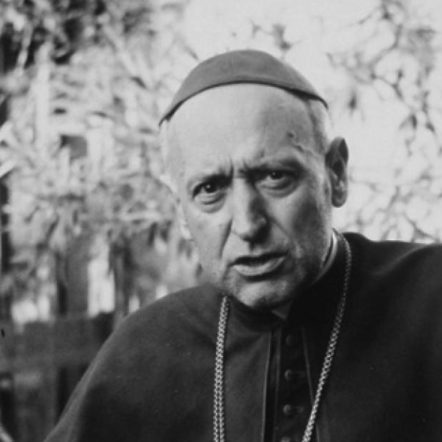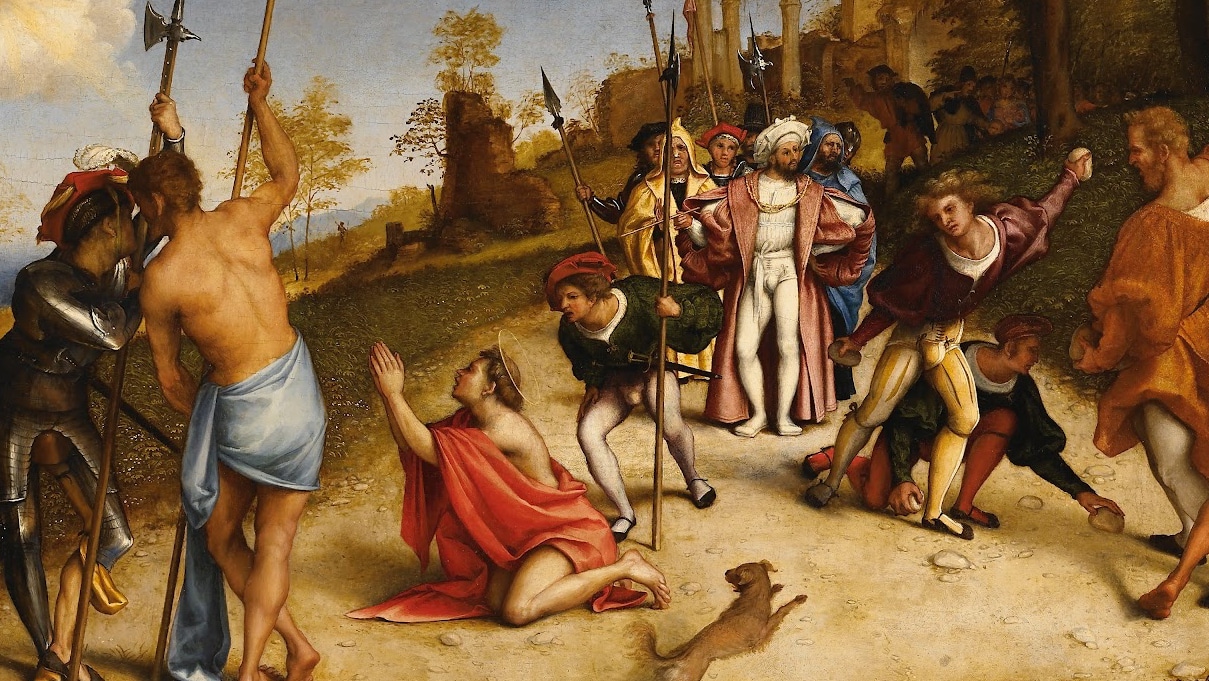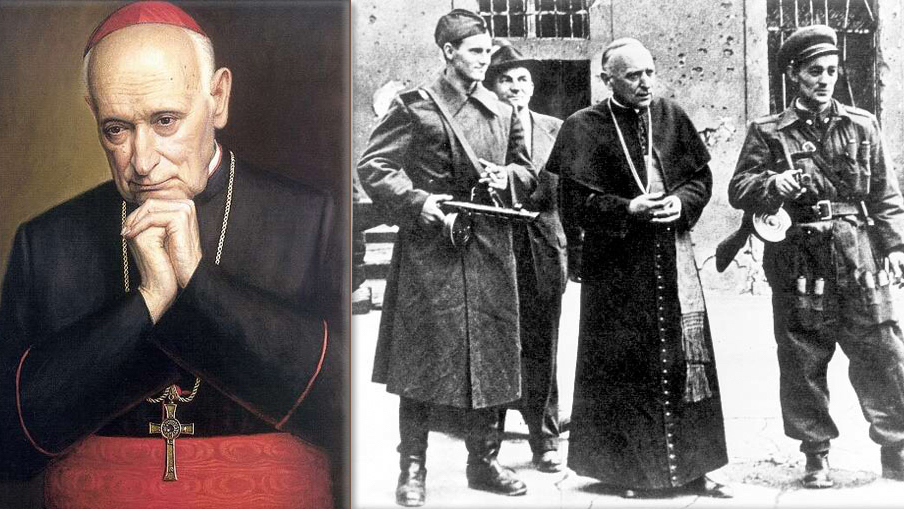The Prisoner is a 1967 British science fiction–allegorical television series about an unidentified British intelligence agent who is abducted and imprisoned in a mysterious coastal village, where his captors try to find out why he abruptly resigned from his job. It was created by Patrick McGoohan and George Markstein with McGoohan playing the main role of Number Six. The show lasted just one full season of 17 episodes, yet it developed quite an almost cult following, both in Europe and in this country.
As the main features writer for the eponymous Cardinal Mindszenty Foundation for 11 years, I was privileged to know the late Eleanor Schlafly, one of the most gracious and charming women I have ever met. For well over 50 years she was the Cardinal’s most profound and dedicated supporter. In 2011 I was honored to be the recipient of the Foundation’s Freedom Award.
The biography of Cardinal Joszef Mindszenty reads more like a European horror show than the dedicated life of a servant of God. Unlike most Catholics who have been tortured and persecuted throughout Christian history, his Nazi and Communist captors denied the Cardinal the crowning glory of martyrdom. However, his 35 years of imprisonment and constant suffering made him a de facto martyr because he did everything he could for his faith except give his life.
Of peasant stock, Joszef Mindszenty was born József Pehm on March 29, 1892, in Mindszent, in western Hungary, in what was part of the Austria-Hungarian Empire. In 1941, he adopted the name of his village in place of Pehm in part because it sounded too Germanic. After his graduation from high school he entered the seminary in Szombathely. He was ordained to the priesthood on June 12, 1915.
With the end of World War I in 1918 and the end of the empire, his life changed dramatically. Hungary quickly became hostile to the Catholic Church. As a result, Mindszenty was destined to spend much of his life in jail, prison or under house arrest. He was first arrested on February 9, 1919 and interned in the episcopal palace until the fall of Béla Kun’s government the following July. The communists had sent him to jail for opposing their nationalization of the Catholic schools. Mindszenty had acerbated his situation by his urging the faithful oppose the new regime because he believed the communists intended to destroy the Church in Hungary.
Between wars Mindszenty chafed under the injustices inflicted on Hungary. On March 4, 1944, Pope Pius XII appointed him diocesan bishop of Veszprém. Two weeks later, the German military forces occupied Hungary in order to prevent it from concluding a separate peace with the Allies. He was arrested again on November 27, 1944, for his opposition to the infamous Arrow Cross, the Hungarian wing of the Nazi occupational government’s plan to quarter soldiers in his official palace.
Mindszenty remained imprisoned until April 1945 when the Soviet Army liberated Hungary. He emerged a national hero, not only for Catholics, but also for Protestant organizations for his consistent resistance to tyranny. Upon his return to Veszprém, he was faced with the Soviet collectivization of Hungary’s farms, which drastically hurt Church revenues. While the communists offered subsidies, the Catholic press remained restricted.
On September 16, 1945, Pope Pius XII appointed him as archbishop of Esztergom and primate of Hungary. At his first episcopal conference in October in Budapest, the archbishop criticized the communists’ land reform and their anti-church policies. The following year the pope elevated him to a Cardinal.
In early 1947, the Soviet Union pressed Mátyás Rákosi, Hungary’s new leader to stamp out Hungarian dissent. Dubbed the bald murderer, Rákosi used Stalinist political and economic methods to establish a communist order, making Hungary one of the most brutal dictatorships in Europe. Stalin’s best pupil presided over several purges, as 1000s perished and many more suffered deprivation and torture.
Rakosi’s oppression greatly impacted the Catholic educational system. In April 1948, the minister of religion and education came forth with a proposal for the re-nationalization of the Catholic schools. When the communists secularized the schools, the Cardinal demanded it be dropped from their agenda. The bishops angered the communists when they flatly refused to recognize the Hungarian Republic, which was nothing more than a satellite for Soviet Russia’s orbit. In his December 8th letter, Cardinal Mindszenty pointed out that recognition was impossible because of their materialistic atheism. As a result, he was arrested again and accused of treason.
The official charges of the Cardinal’s arrest were conspiracy and espionage. The communists twisted his words and submitted forged confession documents. The communists also presented a farcical list that detailed a cornucopia of his offenses that varied from the imaginative to the completely ridiculous. They charged the Cardinal with more than 40 crimes, the most notable of which were foreign-currency abuses and sabotage of Hungarian land reform. The Cardinal declared that any confession with his name on it had to be the result of torture.
At the notorious Secret Police Headquarters in Budapest, he was interrogated relentlessly for 39 consecutive days and nights. They tortured and apparently brainwashed the Cardinal with the most diabolical means and mind-altering tactics that the communists had been perfecting for years. During the day, he was deprived of sleep and drugs were put into his food to break his will. Twice each night for 29 days he was beaten until unconscious with a rubber truncheon all over his naked body. After his mind and body had been broken, Cardinal Mindszenty underwent a show trial. There, he confessed to the charges against him and was sentenced to life imprisonment. He later recanted his entire forced confession. Like something in Franz Kafka’s The Trial, novel, the Mindszenty trial put a human face on the moral struggle between East and West.
Cardinal Mindszenty languished in a succession of damp and frigid cells, subject to the blows and blasphemies of psychotic guards for eight years while the Hungarian government completed the total subjugation of the Church. Religious orders were thrown out of their buildings and jailed. Nuns were prohibited from nursing as well as teaching. Mindszenty’s successor as head of the Hungarian hierarchy was Archbishop Joseph Grosz, who acquiesced in every government demand. His craven behavior did not save him from a Mindszenty-style arrest and trial and a voluntary confession to every charge.
Following the abortive Hungarian Revolution in 1956, President Eisenhower gave Cardinal Mindszenty asylum at the American Embassy in Budapest. His presence later became an inconvenience to the United States government because it strained relations between Hungary’s communists and the American government.
The outcry against Hungary’s inhumane treatment of Mindszenty had been near universal in the West. Pope Pius XII called his arrest a serious outrage . . . on every upholder of the dignity and liberty of man. He defended the cardinal’s right to oppose the government when it contradicted divine and human rights. New York’s Cardinal Francis Spellman roared, if this be treason, to deny allegiance to atheistic communist government — then thank God Cardinal Mindszenty confessed to treason.
Cardinal Mindszenty was fast becoming a Cold War cult figure for his valiant stand against atheistic communism. He was featured on the February 14th, 1949 cover of Time magazine, which had been a steadfast opponent of communism and fascism. A priest suffering torture for the faith might not have been a popular subject among Hollywood’s elite but it resonated well at the box office, especially with millions of Catholics who loved to go to the movies. Even then it took the courage of Eagle Lion, a small studio, who assumed the risks in producing Guilty of Treason in 1950.
The story revolves around a fictitious American reporter, Tom Kelley, who arrives in Hungary shortly before the Cardinal’s arrest. There, he encounters a music teacher, named Stephanie. She is a Hungarian patriot, who is also in love with a fanatical Russian colonel. Acting on a tip, the couple visit Mindszenty’s mother, at the family farm, where they meet the Cardinal himself. He boldly predicts that the Russians will arrest and vilify him. His prophecy rings true with his imprisonment and the shattering of his reputation. While Guilty of Treason is an extraordinary time capsule, the Cardinal’s tragic saga, served more as a tool in the Cold War battle against world communism than as a chronicle of a religious hero.
Cardinal Mindszenty’s ordeal prompted a second movie, even as the world had moved on to larger concerns like the threat of nuclear destruction. In 1955, The Prisoner was produced, with Alec Guinness in the title role. This film contrasted to Guilty of Treason in that there was scant mention of the geopolitics of the Cold War nor was Cardinal Mindszenty identified by name.
The Cardinal’s chief antagonist in the movie, the Inquisitor, had been part of the anti-Nazi Resistance. He informed the Cardinal that he was a hero but now he is a national monument that must be destroyed. At their next meeting, he warns the Cardinal that he will get at the truth. The Cardinal replies, surely it’s a confession you’re after, not the truth. In a frightening tone, the Inquisitor riposted that the State really wanted his mind.
The Cardinal is eventually worn down by the Inquisitor’s incessant questioning. He finally succumbs to the communists’ mind games and confesses to being a traitor. Despite his professional triumph, the Inquisitor is remorseful. While the Cardinal receives the death penalty, the Inquisitor informs him that the sentence has been commuted
His 15 years under virtual house arrest in the American embassy had only made the Cardinal stronger. His presence however was still a constant thorn in the communist side. Communist agents awaited him day and night, hoping to recapture him if he ever left the sanctuary of the embassy. Failing at that, they offered to repatriate him to Austria. He declined to leave his native Hungary, much to their displeasure.
By the early 1960s both the Western governments and the popes decided that peace accords with the communists were not only preferable but also necessary in light of a rapidly changing geopolitical scene. Both John XXIII, Paul VI, and other Vatican accommodationists welcomed an open windows’ policy with the Soviet Union. The Cardinal’s visible presence created a dilemma for the new Ostpolitik, managed by Pope Paul’s Secretary of State, Agostino Casaroli.
Mindszenty’s reputation as a Christian warrior was a constant reminder of the communists grim past. This created an intractable obstacle to the pope’s larger vision of peaceful accords with the communists. As the Cold War thawed, Pope Paul tried to persuade Mindszenty to leave, but only after signing a document of stipulations that significantly watered down the severity of his ordeal at the hands of the communists. Papal obedience had succeeded where Gestapo and NKVD tortures had failed. In 1971, the Cardinal reluctantly left the embassy sanctuary and traveled into exile, first to Rome where he stayed for two months in 1971 before finally settling in Vienna.
Even in his Vienna exile, Mindszenty had become an albatross around the neck of the Vatican. In the fall of 1973, as he prepared to publish his Memoirs, the Cardinal suffered the final betrayal. Fearful that the truth would upset the detente with the Marxists, the pope asked Mindszenty to resign his office. When he refused, the pope declared his seat vacant, to the delight of the communist regime.
Obedient to the end, the Cardinal felt deceived by the Vatican policy of rapprochement with communism. He spent the rest of his life traveling among his scattered flock around the world while giving solace to other dispossessed Hungarians. The Cardinal continued to make it clear that he had not abdicated, but had been deposed. The Vatican was flooded with protests and the Free World’s press condemned his treatment.
A man without a homeland, the Cardinal died on May 6, 1975, in Vienna, Austria, at the age of 83. He was buried temporarily at his own request in the small Austrian town of Mariazell, about 50 miles southwest of Vienna. After the collapse of the Soviet Union, his body was brought back to Hungary and reburied on May 5 of 1991, inside the Basilica of Esztergom. Pilgrims visit it daily and pray for his intercession in their lives.
The Cardinal’s legacy will never be forgotten. For a brief shiny moment in the mid-20th century, the attention of the Free World was riveted on the fate of a single Roman Catholic prelate, who had quickly became a symbol of the chasm between freedom and oppression. For two years after his deal with the Vatican, Cardinal Mindszenty served as a living testament to the dangers of communist persecution.
There is a fitting truism that the mills of God grinding exceedingly slowly. According to an article in a March 2012 edition of the Budapest Times, Cardinal József Mindszenty has finally received a full legal, moral and political rehabilitation after the Chief Prosecutor’s Office accepted a request by Cardinal Peter Erdõ. The ruling ends a 23-year procedure that began with a posthumous re-trial in 1989. By 1991, both Parliament and a ruling of the Supreme Court had declared his innocence.
This new resolution of exoneration effectively closes the official investigation. The Cardinal’s full exoneration will surely add momentum to the cause of his beatification, which has been under way for some time. His official sainthood someday will be the ultimate rejuvenation of his earthly memory and a vindication of his dry martyrdom at the hands of his communist oppressors.








If it weren’t for the Cardinal Mindzenty Fdn. and Eleanor Schafly, the saintly martyr would have been forgotten. Thanks, Bill, for this reminder of what happens under Communism/Socialism regimes. A Blessed Christmas to all!🙏🏻
Amen. I don’t feel worthy to comment in view of the facts of this beautiful servant of God’s life. I am blessed by his holy witness. Praise God for giving him to us. God bless.Anthony